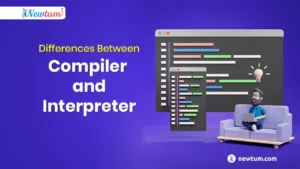Are you diving into the fascinating world of Java programming and feeling puzzled by numerical conversions? Don’t worry; you’re not alone! Understanding how to convert binary to hexadecimal in Java is a crucial skill that can simplify many complex coding tasks. Binary and hexadecimal numbers are essential in the programming and computing fields, helping in tasks like color coding and memory addressing. But how exactly do you make this conversion? In this blog, we’ll guide you through the process step-by-step, making it as clear and straightforward as possible. Stick around, and you’ll be mastering conversions in no time!
Java Code Example: Converting Binary to Hexadecimal
import java.util.Scanner;
public class BinaryToHexadecimal {
public static void main(String[] args) {
Scanner scanner = new Scanner(System.in);
System.out.print("Enter a binary number: ");
String binary = scanner.nextLine();
int decimal = Integer.parseInt(binary, 2);
String hexadecimal = Integer.toHexString(decimal);
System.out.println("The hexadecimal equivalent is: " + hexadecimal.toUpperCase());
scanner.close();
}
}
Explanation of the Code
The given Java code efficiently converts a binary number to its hexadecimal counterpart. Here’s how it works:
- First, the
Scannerclass is used to capture user input. When prompted, the user enters a binary number. Simple, right?The input binary string is then parsed to a decimal integer. The methodInteger.parseInt(binary, 2)is employed, where ‘2’ specifies the base of the input number. Since we’re converting from binary, the base is 2.Next, the decimal number is converted to a hexadecimal string usingInteger.toHexString(decimal). Quite handy, wouldn’t you agree?Finally, the result is printed out in uppercase format to make it look neat and consistent. Additionally, the scanner is closed to prevent resource leakage. This is always a good practice in Java coding!
Output
Enter a binary number: 1010
The hexadecimal equivalent is: A
Real-Life Applications of Converting Binary to Hexadecimal in Java
When you’re just getting into coding, grasping the concepts of binary and hexadecimal numbers can seem daunting. But don’t worry! Understanding ‘How to Convert Binary to Hexadecimal in Java’ is not only a fundamental coding skill but also quite practical in real-world applications. Here are a few scenarios where this conversion is really handy:
- Memory Addressing:
When you’re working with low-level programming, such as systems programming or embedded systems, binary data is often used. Converting this binary data into hexadecimal format simplifies memory addressing because hexadecimal digits are shorter, making it easier to read and understand addresses. - Network Configuration:
The digital world transmits data in binary form, and dealing with it in hexadecimal can streamline various networking tasks. Think about configuring IP addresses or MAC addresses; they often appear in hexadecimal notation, simplifying tasks for network engineers. - Debugging and Error Tracking:
If you’ve ever peeked at a crash log, you might notice hexadecimal codes. Debugging tools often provide memory dumps in a hexadecimal format because it’s more condensed. Converting binary errors into hexadecimal can help developers trace bugs more effectively. - Cryptography and Data Security:
In the realm of data security, hexadecimal plays a critical role. Algorithms often use hexadecimal numbers for encryption keys and hash values. Converting binary numbers into hexadecimal can enhance the readability and management of these cryptographic operations. - Color Representation in Graphics:
Ever wondered about color codes in web development? They’re often represented in hexadecimal—like #FFFFFF for white. Understanding how to convert binary representations of colors helps in graphics and user interface design.
Common Interview Questions on Converting Binary to Hexadecimal in Java
- What is the basic approach to convert binary to hexadecimal in Java?
The basic approach is to first convert the binary number to decimal, and then convert that decimal number to hexadecimal. - How can you convert a binary string to decimal in Java?
You can use Java’s `Integer.parseInt(binaryString, 2)` method to convert a binary string to its decimal equivalent. - What Java method converts a decimal integer to hexadecimal?
Java provides the `Integer.toHexString(decimalNumber)` method to convert a decimal number to its hexadecimal form.
Can you convert binary to hexadecimal directly in Java? No, Java requires you to first convert binary to decimal, which can then be converted to hexadecimal.
Why is understanding this conversion useful?
Understanding this conversion is essential for low-level programming and system design, where binary and hexadecimal representations are frequently used.
Java makes this seem like a breeze! Resources to Practice Now that you get the basics, try using our AI-powered java online compiler where you can instantly write, run, and test your code with AI assistance! This tool is perfect for experimenting with conversions and honing your skills further.
Conclusion
In conclusion, understanding how to convert binary to hexadecimal in Java empowers you to handle data efficiently. For more coding insights, check out Newtum. Explore, practice, and master your coding skills—start a project today and see your growth in action!
Edited and Compiled by
This blog was compiled and edited by Rasika Deshpande, who has over 4 years of experience in content creation. She’s passionate about helping beginners understand technical topics in a more interactive way.



